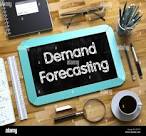Table of Content

Crucial elements of demand planning
1. Appropriate product history –
For knowing the future of how well a product is going to do and trends related to it we need to know the history about the product as well. What was sold in the past can be a good indication of what can be sold in the future. To choose the right period of time is essential. For a reliable forecast, demand based data can be used rather than a sales based one. Demand data shows us how much sales could have been or our true potential on the market. A good example of this is lost sales, when there was no product in stock. These are easily handled in Streamline, preventing you from demand forecast inaccuracy and lost sales in the future. The software pulls daily on-hand information from the ERP system and uses the information about stock outs to determine the true demand and to adjust the forecast automatically.
2. Internal Trends –
This trend reflects one or another pattern of sales of the product or group of products. Talking about demand forecasting, it is necessary to select the right methods and models for forecasting according to the sales pattern. As well it is of high importance to understand what part of the pattern is relevant, because choosing the wrong method may affect the accuracy of the forecast and as the result to plan too much or too little inventory. Depending on this, you may have overstocks, frozen capital and slow turnover, or stock outs, dissatisfied customer and loss of sales. For example, a ‘winter product’ barely sells between April and August, and sells strongly through the fall and early winter months with a huge peak in December. Once these seasonal sales patterns become evident this knowledge can be put to good use in planning production and shipping.
3. External trends –
Businesses can be influenced more intensively than the internal ones. External factors like include competition, socio-cultural, legal, technological changes, economy, and political environment impact the ability of the business or investment to achieve its strategic goals and objectives. Sales depend on the wealth of a population, so when economic conditions aren’t bright, you need to adjust your strategy. This could mean layoffs and other cost-cutting measures, price reductions to increase sales volume etc. Cultural Shifts – The society we live in dictates our personal values to a large degree, including the types of products we buy, the places we go, and the services we use. Shifts in culture, therefore, drive the demand for new gadgets, clothing, food, clothing, music, and even business systems. Political forces and government intervention can create a market or practically destroy it, as in the case of alcohol during the Prohibition. It could have a direct impact on your business increasing or decreasing overall demand. Technology, especially when widely adopted rapidly, is always a major disruptor and game-changer, and there are many examples of industry leaders who ignored technological change and suffered greatly for it.
4. Events and promotions –
Different events and promotions have different substantial effects on future demand of products. It is important to build an adequate forecast in such frequent cases as launching new products or replacing old products with new ones. I am sure you are familiar with such marketing method as substitution (creating an analogue to a previous product), which always helps restart customers’ interest. Black Friday or Christmas sometimes may have better sales in one day than you may usually sell in 30 regular days.
Methods of demand planning using technology
1. Streamline forecasting processes with AI –
Rapid advances have taken place in the field of Artificial Intelligence. Demand planning methods are powered up by artificial intelligence. Business intelligence is leveraged by companies with the help of AI from diverse sources. The best part is that AI-powered demand forecasts are generated in minutes using real-time data. You don’t only speed up things; you get a nearly accurate prediction of your customers’ demand whenever you need it.
2. Listen to social media chatter –
Many big giant companies like Pepsi Co. uses social media to sense and predict demand. It is one of the notable cases of utilizing social media to accommodate consumer demand. In anticipation of demand and helping the business to cope up with the sudden surge or dip of interest in the product, social media plays a huge role. Social media analytics and listening tools help you gather and analyze social media chatter that involves your brand, from comments to posts to any other mentions of your product. Notifications are sent once certain triggers are activated, informing you and your team of specific developments so you can take the appropriate course of action in real time.
3. Improve demand forecasting with IoT –
IoT or Internet of Things is still a fresh concept as a supplement to demand planning. From tracking assets to providing inventory managers of real-time information on status and location of their stocks IoT plays a significant role. IoT has indeed modernized how businesses handle their inventory. IoT also helps analyze and sense demand as well as shifts in demand by factoring in other variables such as seasonal purchases, weather conditions, historical trends, and more. With IoT, businesses can gather accurate data for analysis. A clear, accurate, and comprehensive picture of your inventory is provided. This enables you to schedule stock purchases on a per need basis, reducing the risk of stocking in excess or too low.
Importance and benefits of demand planning
1. Forecast accuracy improvement –
This is an essential component of demand planning and can be improved with time. Forecasting helps to identify what all items are required also gives a clear idea about how much revenue can be generated in future. For example, if the company consistently overestimates the demand for an item, it can investigate what led to the forecast inaccuracy and then adjust it so that it becomes more and more accurate over time.
2. Manage inventory levels –
Demand planning helps to manage inventory levels which aligns with increases and decreases in demand. When demand signals are incorporated into demand forecasting strategies, it allows manufacturers to have the right number of items in stock. It prevents holding too many unnecessary items in stock when the demand decreases and ensures that enough amount of materials and products are available when demand increases. For example, A soap manufacturer has already created a batch of soaps to dispatch to different points of sale. Given the high consumption of soaps, it reorders raw materials to start manufacturing the next lot. Raw materials ordered beforehand, in this case, act as the inventory for the company. And the already delivered finished products are the inventory for retail units that will be selling soaps further. Pre-ordering raw materials helps the company produce and supply soaps regularly to ensure the lead time does not keep customers waiting or making them switch to its competitor’s soap.
3. Improved production scheduling –
Better planning of processes like production scheduling, warehousing and shipping can happen when manufacturing organizations can predict when sales are about to happen. This planning also saves costs. For example, the capacity plan can be used to identify the best time to conduct mandatory maintenance work on machines by avoiding periods where there are many orders scheduled. This will help save money as the production schedule can be optimized around the planned downtime and will help prevent unexpected machine breakdowns.
4. Optimize labor scheduling –
It is important to know how many workers are needed to complete the orders on time and accordingly labor costs must be levied. As inventory management, forecasting, and production scheduling become more accurate, you will be able to know how many workers you will need to complete the production orders in a timely manner. For example, in Formula One (F1), all teams have pretty much the same setup and cars. The teams that usually come on top are the ones that are able to optimize all the teams, cars, drivers, mechanics, engineers, and departments to win.
Comparison between traditional method of demand planning and present method using technology
| Traditional planning | Technological planning | |
| 1. Ability to consider numerous variables and data sources | Adding extra variables and sources requires a lot of effort | Multiple variables can be smoothly incorporated courtesy the high level of automation. |
| 2. Volume of manual work | High | Low |
| 3. Amount of data required | Small | Large |
| 4. Maintenance complexity | Low | High |
| 5. Technology requirements | Low | High |
| 6. Best fit | Mid/long term planning, stable demand, established products | Short/mid-term planning, new products, volatile demand scenarios |
Challenges of demand planning and how can it be overcome using technology
1. Collecting information from various teams – Most of them have no vested interest in getting you accurate information on time. Collecting key information is a weekly ‘cat-herding’ exercise.
2. Making sense of differently formatted information – When information is collected and formed into spreadsheets lots of it are required and all of them have to be formatted differently. Then how do we come to know what has changed from last month with all this inconsistent information which is differently formatted?
3. Creating the demand plan – Once you have collected as much information as possible and uploaded it in the demand planning system to create the plan it still feels like something isn’t right. Historical sales and demand data are useful but it is only creating a 2 dimensional forecast. If only our well-honed planning skills could be enabled by real-time, leading indicators of demand to make a truly comprehensive forecast.
4. Getting teams to actually use it – Once you have created your demand plan it needs to be generated for results to be shown but it turns out that the supply chain team didn’t even implement the plan because they did not understand the plan and hence they make their own plan and execute it since they do not want to slow down the process and get stuck with excess inventory and get blamed eventually.
5. Getting blamed for poor forecast accuracy – After all the effort put in for demand planning and the management is not happy with your plan and blames you for it and makes you solely responsible for excess inventory and poor-on shelf availability. But when you call the process planning poor and that is when their ears go deaf.
Advances in artificial-intelligence techniques and machine-learning algorithms are enabling platforms to take leading indicators of demand (e.g., weather, future sales activity, and promotions) into account, and make demand planning much more accurate.
- To overcome the challenges mentioned above the modern manufacturers should highly consider using new technology in order to improve the accuracy of the forecasts. With technological advancements, demand planning software can quickly integrate and analyze multiple sources of information at once to facilitate the planning process. Modern software’s are now able to integrate internal and external data sources which greatly improve demand planning accuracy.
Conclusion
The demand planning function requires input from and coordination between several departments, including sales and marketing, purchasing, supply chain, operations, production and finance. Additionally, executives responsible for product portfolio management and overall business strategy play important roles by taking into account lead times for components and production times. Since demand planning touches so many business functions, the location of employees who handle this responsibility can vary: It may be an independent group or it may be integrated into one of the departments listed above, as well as the procurement or operations departments. Some believe that demand planning, especially the demand forecasting component, is most successful when it is closely linked to sales and marketing.


